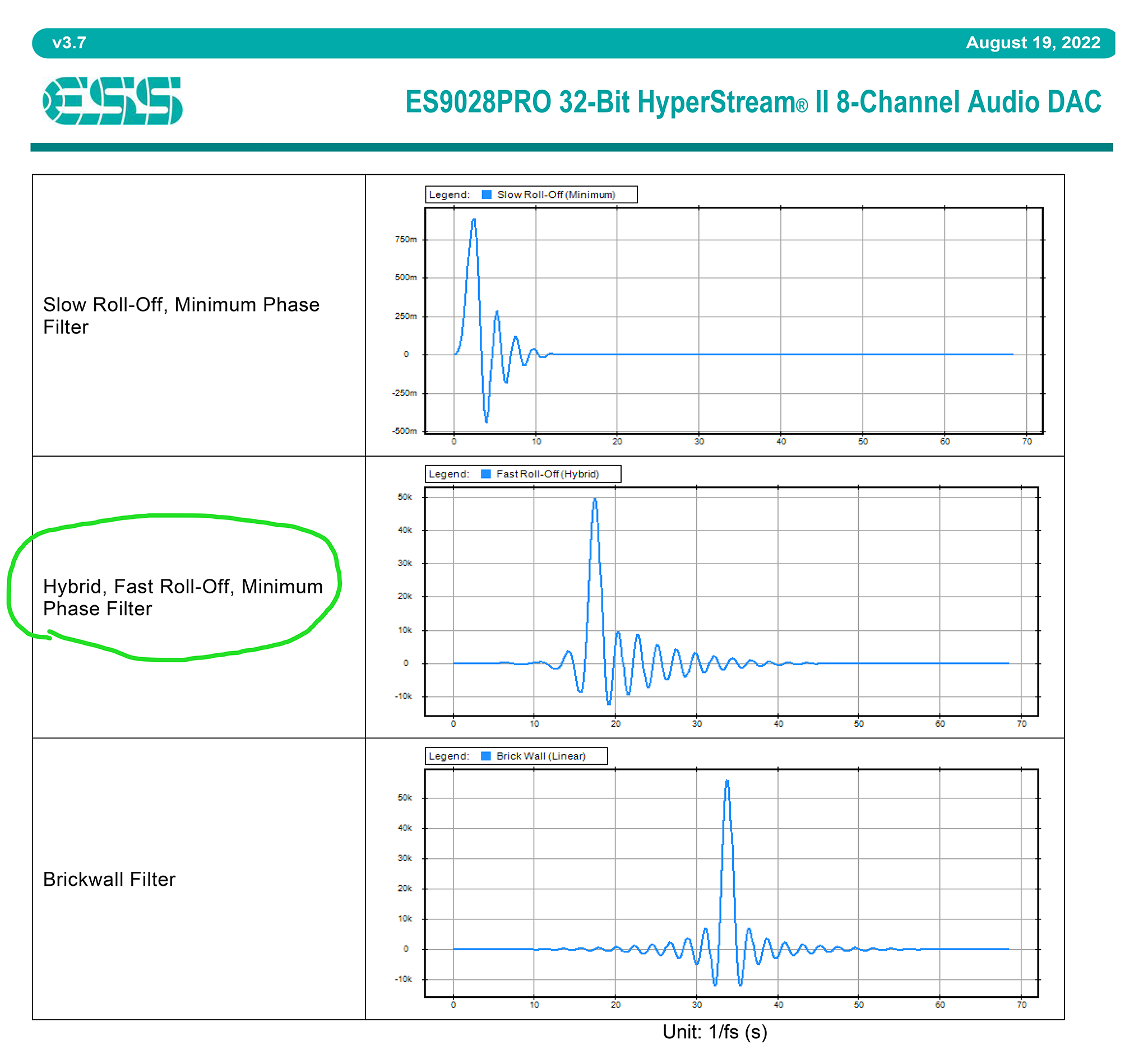I have a theory as to why all modern DACs essentially sound so similar these days, making it difficult to differentiate between them. IMO modern Delta Sigma chips have homogenized DACs into close to the same sound, making it very easy to take any DAC under $3000 and find it will sound good as another.
What I have discovered is that ladder R2R DACs and fully discrete DSD DAC’s are creating a better soundstage and less digital “glare”. An observation supported by countless others - nothing new. Anything with a Delta Sigma chip-based DAC that does oversampling will have less soundstage and more glare.
Nothing new so far - most of you will likely agree that that the above is a common consensus but here is the new bit, so read on if you are curious…
The dissatisfaction with this sound has led to a band-aid solution where Delta Sigma DAC manufacturers now offer a plethora of filters from sharp to smooth, linear phase to minimum phase. All of this is hand waving nonsense that offers a band aid to what is an absolutely fundamental design issue.
FUNDAMENTAL DESIGN ISSUE:
All oversampling with Delta Sigma offers superb measured spec at very low cost - it’s the logical choice for anyone using Precision test equipment to design a DAC. Typical chip filters use about 60 taps in their filters. They also ALL use Parks-McLellan filter designs (which has best “spec” and the short tap length is required for low-latency and easy processing). The result is a filter that has equiripple through the entire pass band. Mathematically it is a fact that an equiripple in the frequency domain equates to two echoes in the time domain - a pre-echo and post-echo. The “digital glare” heard is because of these echoes, likely the pre-echo is most audible. Our ears brain are processing the echos because unlike noise they are a complete reflection of the entire audio signal - low in level but lasting long enough to be detected by our acuity to locate the source of a sound. It is the same reason our speakers sound and image much better when moved out into the room and away from any close proximity to reflective surfaces. Despite these echoes being 60 db down from the primary signal, my listening sessions have convinced me of their audibility, particularly the echoes caused by the first 2x upsampling for 44.1 Redbook data (less so for higher resolution files).
CONCLUSION
Those who are trying MQA and various filters with typical Delta Sigma DAC’s are using band aids. A growing number of critical listeners have discovered that ladder R2R sounds better than typical DS DACs or, alternatively, that high precision conversion to DSD256 on a computer fed to a true one-bit discrete Delta Sigma converter (no chip) sounds equally great too.
Basically any conversion that eliminates oversampling/upsampling done on a chip is going to have less digital glare and better soundstage because of this absolutely fundamental design flaw in ALL Delta Sigma DAC chips.


